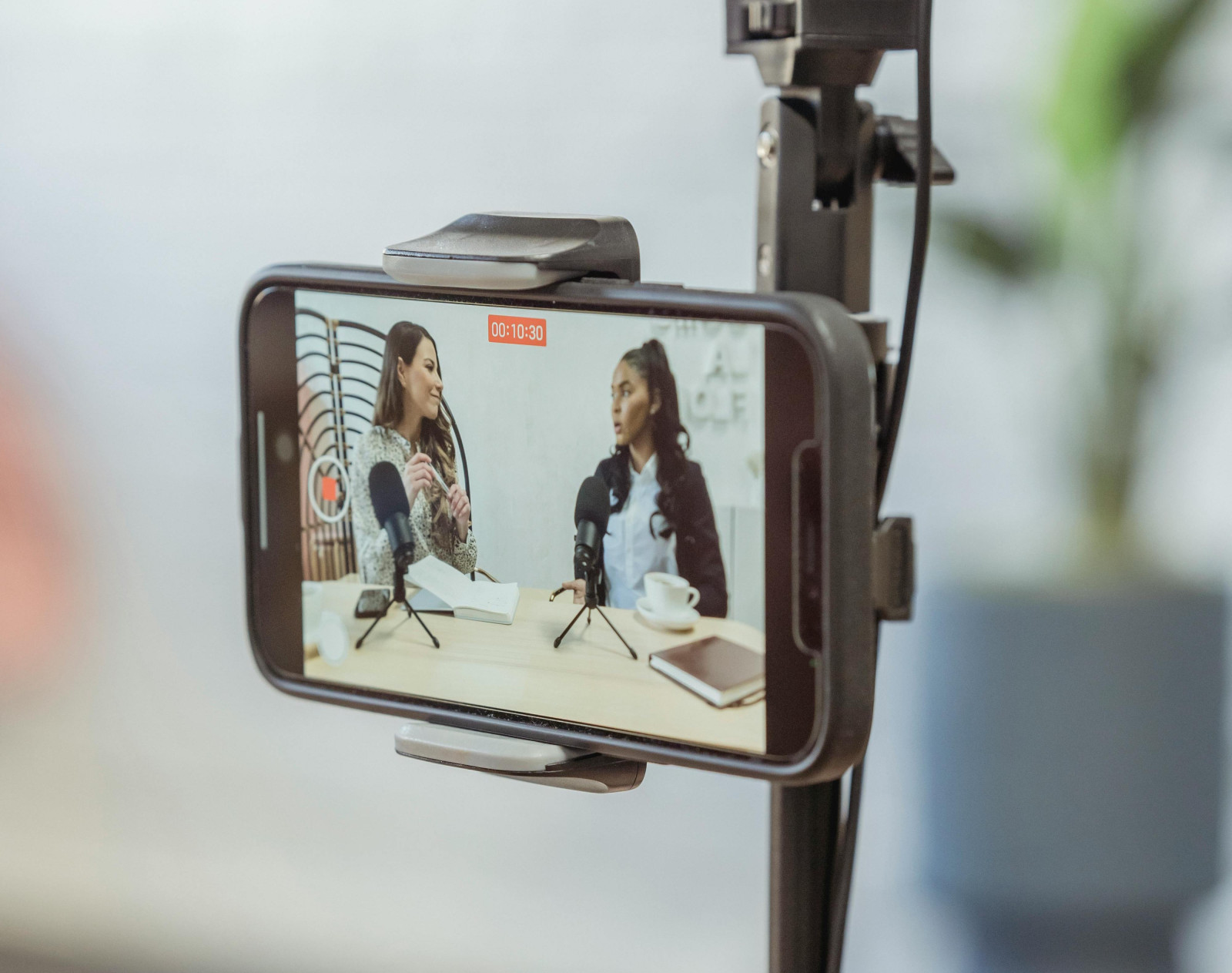Ghost podcasts are haunting your social feed — what to know about the new ad format


We typically think about podcast advertising in terms of brands advertising their products on podcasts, but an emerging podcast advertising trend is calling into question what a podcast actually is. Rather than advertising on podcasts, brands are starting to advertise as podcasts. Making use of the phenomenon of podcast clips going viral on short-form video platforms, some brands are launching ghost podcasts as ad creative. Usually, this involves two or three people sitting in front of microphones having a conversation about the brand. In most cases, these podcasts do not actually exist off social media, which begs the question….
What is a podcast?
In theory, a podcast is an audio file that sits on an RSS feed. In practice, it can be so much more than that, as the technicalities of audio delivery do not matter to consumers so long as the user experience is quick and convenient. Video recordings of podcasts on YouTube, for instance, are not technically podcasts, even though the audio from the YouTube video is virtually indistinguishable from the audio delivered via RSS feed on Apple Podcasts or Spotify. Nonetheless, the average consumer likely thinks of these videos as podcasts.
To most listeners, a podcast is on-demand spoken word audio that typically involves two or more people having a conversation. Although there are exceptions (such as educational podcasts), conversation seems to be integral to the format, whether it is a New York Times journalist interviewing another journalist or recurring co-hosts riffing on the episode topic. Consequently, when users see two or more people having a conversation with microphones in front of them, it immediately signals “podcast”, making the ghost podcast trend a potentially successful means of advertising online.
Ghost podcasts can solve one of digital advertising’s biggest challenges
Ironically, at a time when the podcast industry is thinking about how to better monetise podcasts, brands have figured out a way — and all without releasing a single episode. Capitalising on consumer heuristics, i.e., quick assumptions about what constitutes a podcast, brands can film three people in a studio, put microphones in front of them, and give them ad copy to read, playing it off as if they are having a casual conversation. It helps that podcasts are one of the formats with the lowest barriers to entry. As users scroll through their short-form video feeds, they will likely perceive this ad creative as organic content rather than a sponsored post, which is a huge win for advertisers.
Featured Report
India market focus A fandom and AI-forward online population
Online Indian consumers are expected to be early movers. They are high entertainment consumers, AI enthusiasts, and high spenders – especially on fandom. This report explores a population that is an early adopter, format-agnostic, mobile-first audience, with huge growth potential.
Find out more…One of the biggest challenges in digital advertising is that social media users are smart. Most know immediately when they are being sold something, and this tends to hurt advertising performance. The more organic ad creative looks — especially on short-form video platforms — the better it tends to perform. Given that more than half of podcast users discover podcasts through YouTube or TikTok clips, according to MIDiA’s Q3 2023 consumer survey, brands can tap an audience that is eager to convert. Whether or not landing on an advertiser homepage instead of a podcast feed leaves a bad taste in people’s mouths is another story.
What do ghost podcasts mean for actual podcasts?
Podcast-inspired ad creative is the result of innovative digital advertising strategy, and it also serves as a model for how podcasters can advertise their own brands. Many podcasters likely think of podcasts as an audio format, which it is. In many ways, however, podcasts defy format categorization altogether, opening the door for other mediums to expand the meaning of what a podcast is.
One consequence of that expansion of meaning is the threat of dilution. Fluidity may make podcasts unique, but that lack of definition will also make it difficult for the industry to develop if brands and video content creators continue to hybridise mediums. How does an industry establish the foundations of monetisation without a clear sense of what the industry actually is?
On the other hand, embracing podcast fluidity can also make the industry more nimble when it comes to adapting to new consumption trends. Short-form video is here to stay, so podcasters should also start considering the social media format as a medium for podcast consumption in its own right. Rather than an audio-first format, podcasts may evolve into a video-first format, meaning the podcast industry will have to prune RSS technicalities in order to nurture new growth.
Either way, if a brand can successfully advertise a podcast that does not exist, then podcasters should have no problem advertising their own quality content to a content-hungry audience. The demand is there in one form or another; it is just a matter of delivering the supply in the right format.

The discussion around this post has not yet got started, be the first to add an opinion.